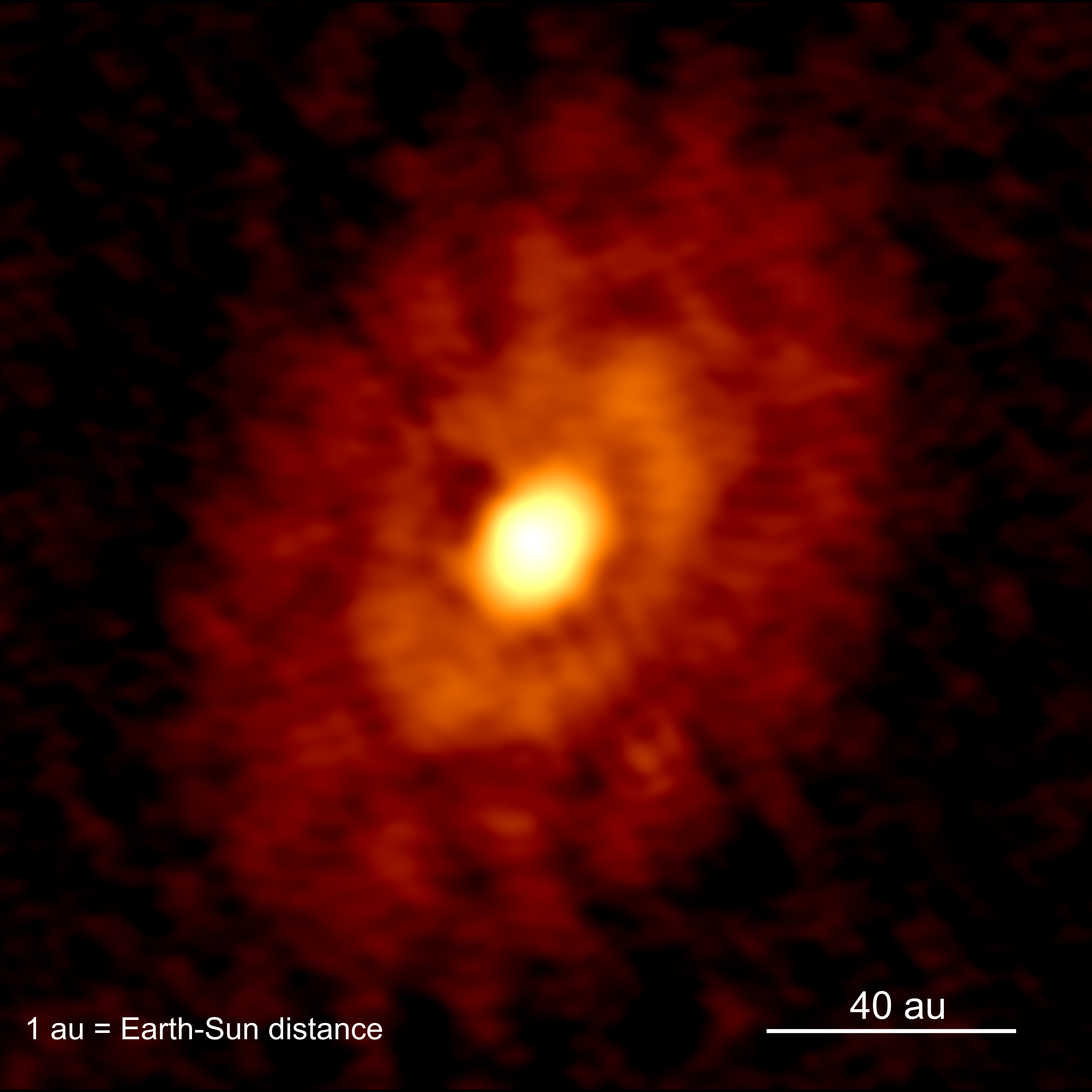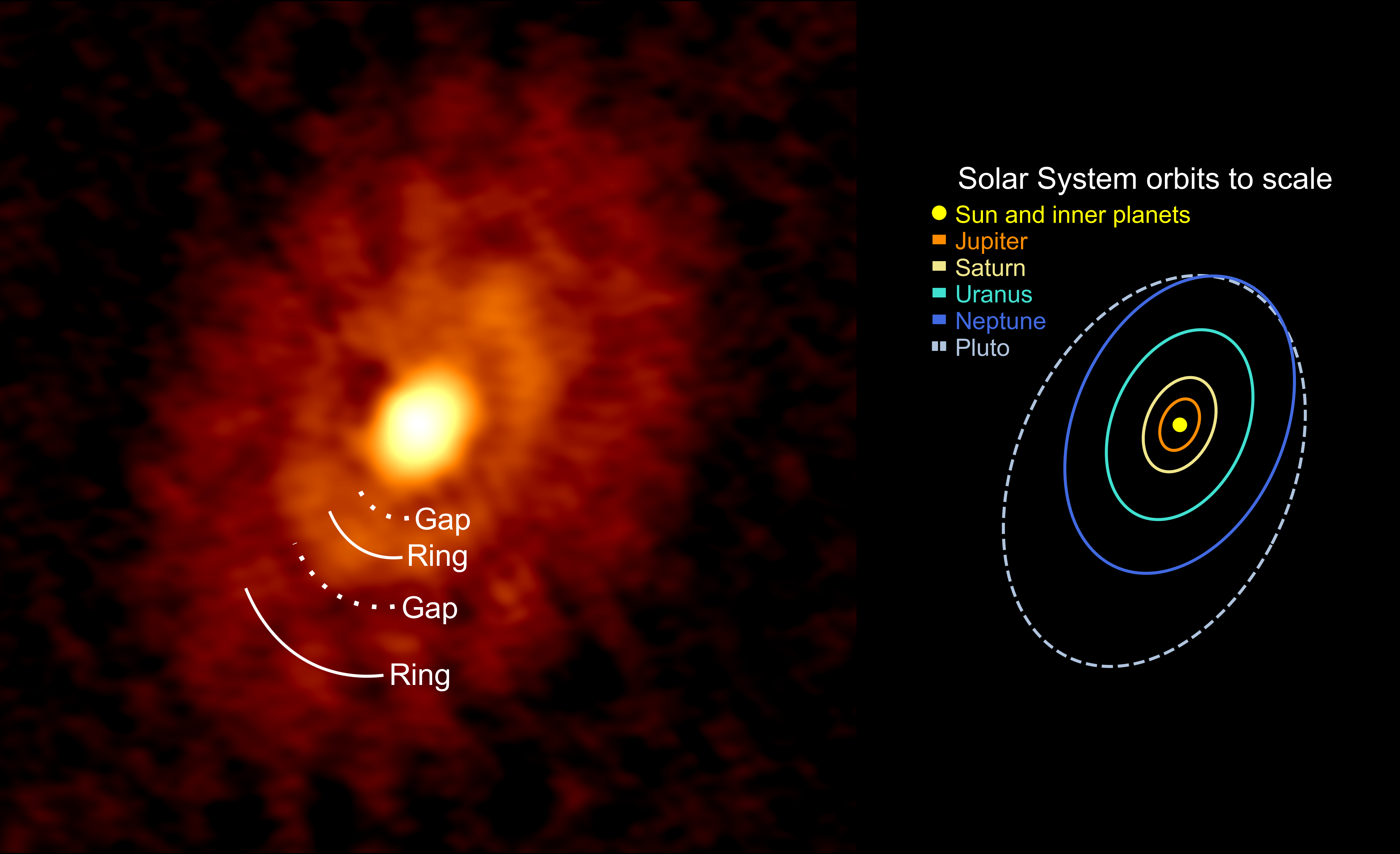Strange rings around protostar suggests planets form earlier than thought

Rings detected around a newborn star may suggest that planets are born earlier than previously thought, a new study finds.
Stars are born from dense clouds that collapse in on themselves under the force of their own gravity. As the blanket of gas and dust surrounding a nascent star, or protostar, shrinks over time, a disk forms around it that can give rise to baby planets, or protoplanets.
"Planets form out of the dusty material that surrounds protostars in a disk," study lead author Dominique Segura-Cox, an astronomer at the Max Planck Institute for Extraterrestrial Physics in Garching, Germany, told Space.com. "Rings in these disks show where dust is piling up, making it easier to stick together to form a young planet."
Previous research found rings and gaps in disks around protostars as young as about 1 million years old, such as HL Tauri, located about 450 light-years from Earth, in the constellation Taurus. (In comparison, the sun and solar system are about 4.6 billion years old.)
"I asked the question — do planets start forming even younger?" Segura-Cox said.
Young star, young planets?

In the new study, astronomers investigated IRS 63, a protostar located about 470 light-years away, in the constellation Ophiuchus. Previous research found this protostar is less than 500,000 years old. "I chose to observe IRS 63 because it's even younger than HL Tauri and one of the closest and brightest protostars in that age group," Segura-Cox said.
IRS 63 is surrounded by a spinning disk of gas and dust that is relatively large for a young star, one more than 50 astronomical units (AU) wide. (One AU is the average distance between Earth and the sun, which is about 93 million miles, or 150 million kilometers.)
Get the Space.com Newsletter
Breaking space news, the latest updates on rocket launches, skywatching events and more!
"The size of the disk is very similar to our own solar system," Segura-Cox said. "Even the mass of the protostar is just a little less than our sun's."
The scientists analyzed IRS 63's disk using the Atacama Large Millimeter/submillimetre Array (ALMA) in Chile, the world's most powerful radio telescope. They discovered it possessed two dark concentric rings, which appear to be gaps separating the disk into two bright concentric rings. "It's exciting to see such a clear detection of rings in a disk around a protostar so young," Segura-Cox said.
The innermost gap lies 19 AU from the disk's heart and is 3.2 AU wide, and the outermost gap is 37 AU from the disk's center and is 4.5 AU wide. The innermost bright ring lies 27 AU from the disk's hub and is 6 AU wide, and the outermost bright ring is 51 AU from the disk's core and is 13 AU wide.
"All the conditions are right to form a planet in the IRS 63 disk," Segura-Cox said.
If these gaps are caused by protoplanets carving their way through the gas and dust of IRS 63's disk as they circle the protostar, the researchers estimated the innermost gap was created by a nascent world nearly one-half Jupiter's mass, whereas the outermost gap was the result of a newborn planet nearly one-third Jupiter's mass.
"The rings in the disk of IRS 63 are so young," Segura-Cox said. "We used to think that stars entered adulthood first and were the mothers of planets that came later, but now we see that protostars and planets grow and evolve together from early times, like siblings."
Are they baby planets or not?

However, previous research has suggested that gaps can form in protostar disks that are not caused by protoplanets, the scientists noted. For example, the aerodynamic drag the disk's gas can exert on the dust and the dust can exert on the gas could lead gaps to appear, they said.
"I think a lot of people are going to say that just because there are rings, that doesn't prove planets are already formed," Segura-Cox said. "I'm not claiming the youngest detection of planets; that's something we need to try to look for next."
Instead, "with this result, I'm showing that all the necessary conditions to form planets are in place very early, at an age where the protostar itself will still accrete a significant amount of mass from its larger scale parent cloud," Segura-Cox said. "Going forward, we need to think about star and planet formation starting together, which means we scientists have to change our assumptions about how early planet formation begins."
In this new study, the scientists focused on the dust around IRS 63. Next, they are going to examine the gas there. "There's about 100 times more mass in gas than dust around the disk of IRS 63," Segura-Cox said. Analyzing both the gas and the dust will give a better picture as to how disks form and evolve around protostars, she said.
The scientists detailed their findings in the Oct. 8 issue of the journal Nature.
Follow Charles Q. Choi on Twitter @cqchoi. Follow us on Twitter @Spacedotcom and on Facebook.
Join our Space Forums to keep talking space on the latest missions, night sky and more! And if you have a news tip, correction or comment, let us know at: community@space.com.

Charles Q. Choi is a contributing writer for Space.com and Live Science. He covers all things human origins and astronomy as well as physics, animals and general science topics. Charles has a Master of Arts degree from the University of Missouri-Columbia, School of Journalism and a Bachelor of Arts degree from the University of South Florida. Charles has visited every continent on Earth, drinking rancid yak butter tea in Lhasa, snorkeling with sea lions in the Galapagos and even climbing an iceberg in Antarctica. Visit him at http://www.sciwriter.us








